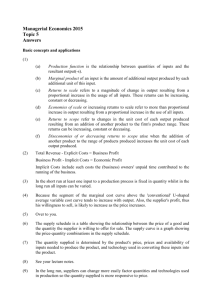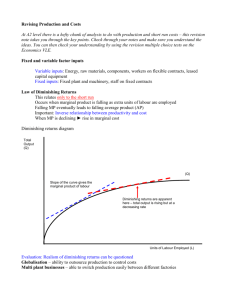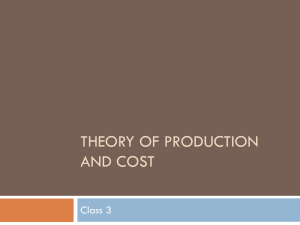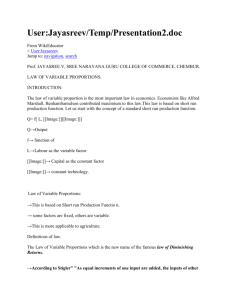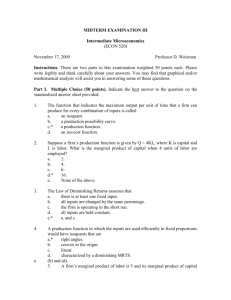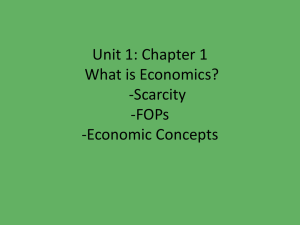Interactive Activity - The Law of Diminishing Marginal Productivity
advertisement
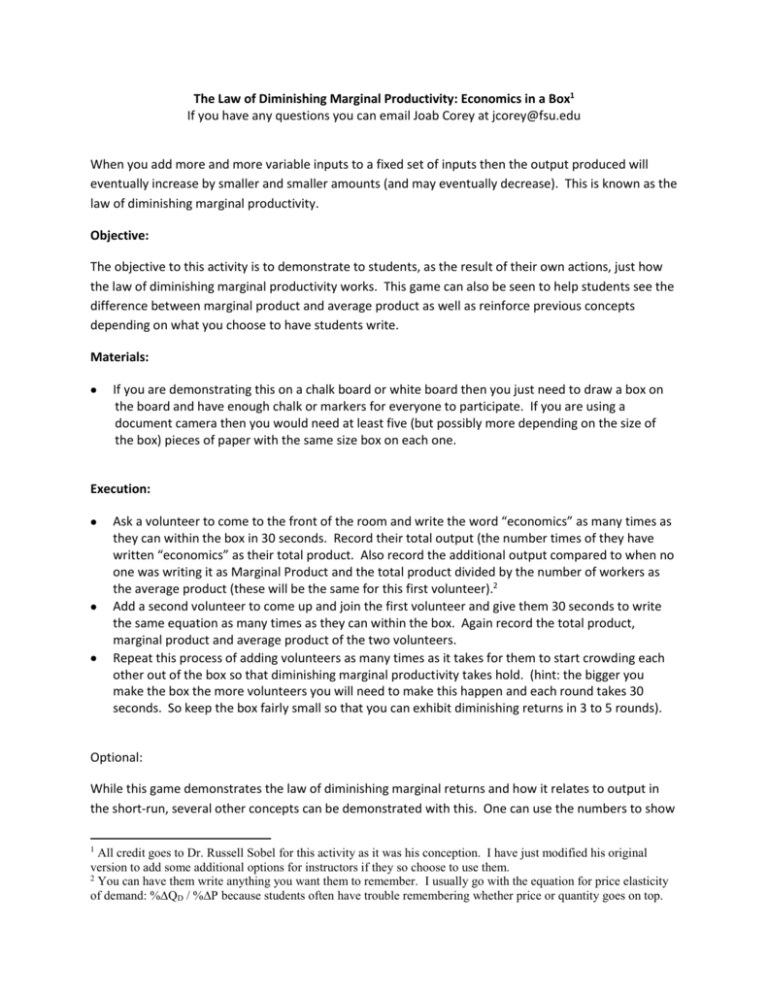
The Law of Diminishing Marginal Productivity: Economics in a Box1 If you have any questions you can email Joab Corey at jcorey@fsu.edu When you add more and more variable inputs to a fixed set of inputs then the output produced will eventually increase by smaller and smaller amounts (and may eventually decrease). This is known as the law of diminishing marginal productivity. Objective: The objective to this activity is to demonstrate to students, as the result of their own actions, just how the law of diminishing marginal productivity works. This game can also be seen to help students see the difference between marginal product and average product as well as reinforce previous concepts depending on what you choose to have students write. Materials: If you are demonstrating this on a chalk board or white board then you just need to draw a box on the board and have enough chalk or markers for everyone to participate. If you are using a document camera then you would need at least five (but possibly more depending on the size of the box) pieces of paper with the same size box on each one. Execution: Ask a volunteer to come to the front of the room and write the word “economics” as many times as they can within the box in 30 seconds. Record their total output (the number times of they have written “economics” as their total product. Also record the additional output compared to when no one was writing it as Marginal Product and the total product divided by the number of workers as the average product (these will be the same for this first volunteer).2 Add a second volunteer to come up and join the first volunteer and give them 30 seconds to write the same equation as many times as they can within the box. Again record the total product, marginal product and average product of the two volunteers. Repeat this process of adding volunteers as many times as it takes for them to start crowding each other out of the box so that diminishing marginal productivity takes hold. (hint: the bigger you make the box the more volunteers you will need to make this happen and each round takes 30 seconds. So keep the box fairly small so that you can exhibit diminishing returns in 3 to 5 rounds). Optional: While this game demonstrates the law of diminishing marginal returns and how it relates to output in the short-run, several other concepts can be demonstrated with this. One can use the numbers to show 1 All credit goes to Dr. Russell Sobel for this activity as it was his conception. I have just modified his original version to add some additional options for instructors if they so choose to use them. 2 You can have them write anything you want them to remember. I usually go with the equation for price elasticity of demand: %∆QD / %∆P because students often have trouble remembering whether price or quantity goes on top. the relationship between marginal and average variables (when marginal is higher than the previous average, the average will increase and when marginal is less than the previous average, the average will decrease. Grade Point Average (GPA) is a way to relate this to students so that they can understand it. One can also expand the size of the box and continue playing to show how the expansion of the fixed amount of inputs in the long-run can increase productivity for a company who suffers from diminishing marginal returns. I usually tell students about this rather than demonstrate it because of the constraints on class time. Discussion Questions: 1. What eventually happened to the total number of words written in the box as more and more employees were added to the fixed amount of space? Did this number increase by bigger or smaller amounts as more people were added? Why? 2. What could be done to enhance the productivity of the workers at the end of this demonstration? Should the teacher add another variable resource (student) or should the teacher expand the amount of fixed resources (size of the box)?

